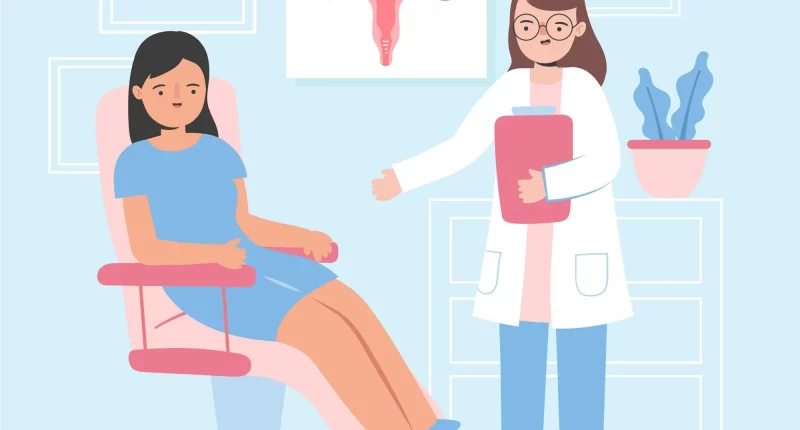Cervical intraepithelial neoplasia, often referred to as cervical dysplasia, is a condition where unusual cells develop on the cervix’s surface. It is the uterus’s lower part that opens into the vagina, and the abnormal growth occurs in the lining of this area.
CIN is usually identified during Pap smear tests, which are screening procedures that check for changes in the cervical cells. The main cause of CIN is infection with the human papillomavirus, a common virus with over 100 different types. Some kinds of HPV are more likely to cause changes in cervical cells that can lead to cancer.
The approach to treating CIN depends on several factors, including your age, your risk factors for developing cervical cancer, and any other health conditions you may have. Treatment options may vary, and your healthcare provider will recommend the best course of action based on your specific situation.
Symptoms
CIN often grows without noticeable symptoms, which makes it challenging to identify without screening. Due to this, routine Pap smear tests are crucial—they are the only way to identify the presence of abnormal cells in the cervix. Regular screening can help catch CIN early, even before symptoms appear, allowing for timely intervention.
Once CIN is diagnosed, further division is done to determine the extent of tissue affected by the abnormal cells. CIN is categorized into three stages based on the thickness of the affected epithelial layer:
- CIN 1: This form involves abnormal cell growth in almost 1/3rd of the thickness of the cervical lining.
- CIN 2: In this intermediate stage, unusual changes are seen in 1/3rd to 2/3rd of the layer of epithelial.
- CIN 3: This is the most serious form, where greater than 2/3rd of the cervical lining is affected by abnormal cells.
These classifications help healthcare providers determine the appropriate treatment and monitoring strategies for each patient.
Causes
CIN is most typically caused by certain types of the human papillomavirus, particularly HPV16 & HPV18. These two strains are responsible for approximately 70 percent of cervical cancers and premalignant cervical lesions, according to the World Health Organization. HPV is a widespread virus, and almost all sexually active males and females will contract it at some time in their lives. While the virus itself is common, certain risk factors can heighten the likelihood of contracting HPV and developing CIN.
Several factors can elevate the risk of HPV infection, including age, as nearly 50 percent of HPV infections happen in females with 15 to 25 years old. Smoking cigarettes, immunosuppressant drugs, engaging in unprotected sex, and several sexual mates, and becoming sexually active before 18 years old also increase the risk. However, one of the most effective ways to protect against HPV infection is through vaccination. Getting vaccinated can significantly decrease the risk of contracting HPV and, consequently, lower the chances of developing CIN and related complications.
Diagnosis
If a Pap smear shows abnormal cells, your healthcare provider will contact you to speak about the next steps. When it’s normal to feel concerned, it’s crucial to know that premalignant cells, like those found in CIN, typically take years to develop into cancer. The next step in the diagnostic process often involves a procedure called colposcopy. This procedure allows the healthcare provider to test the cervix crucially using a special microscope.
During a colposcopy, which can be done in the healthcare provider’s office, the healthcare provider looks for any growths, lesions, warts, or inflammation on the cervix. Depending on the findings, your healthcare provider may decide to carry out a biopsy, which involves removing a small sample for further analysis. In some cases, close testing with more frequent Pap smears may be recommended instead of immediate treatment.
For those who haven’t been tested for HPV, it’s important to know that screening rules include HPV testing, particularly for women 30 years old and over. This testing helps assess your risk for CIN and cervical cancer and aids in choosing the most appropriate treatment method. Getting tested for HPV is an essential part of understanding your overall health and managing potential risks.
Treatment
In cases of CIN 1, treatment might not be important because the basic HPV infection often clears up itself. The body’s immune system can typically resolve the infection without intervention. However, for CIN 2 or CIN 3, treatment is often recommended to prevent the abnormal cells from multiplying or mutating into cancer over time.
For more severe cases of CIN, several treatment options are available:
- Cryotherapy: Also known as cold therapy, cryotherapy freezes and destroys abnormal tissues.
- Biopsy: This procedure involves removing a cone-formed section of abnormal tissue. It serves both diagnostic and therapeutic purposes, helping to rule out abnormal cells and determine the extent of the disease.
- Laser Therapy (Laser Ablation): This method uses a focused laser beam to burn away abnormal cells.
- Loop Electrosurgical Procedure: It involves using a thin wire loop heated by electricity to rule out unusual tissue.
Scientists are also exploring other treatments and investigating factors that may influence the progression or regression of CIN. One study examined the role of Lactobacillus spp. The study found that lower levels of Lactobacillus were linked with lower rates of disease regression over 12-month & 24-month follow-ups. This suggests a potential link between the presence of these beneficial bacteria and the body’s ability to combat the disease, although further research is needed to fully understand this relationship.
Summary
Cervical intraepithelial neoplasia, often caused by HPV, involves abnormal cell growth in the cervix and is typically detected through Pap smears. CIN is classified into three grades, with treatment varying based on severity. CIN 1 may resolve without intervention, while higher grades like CIN 2 and CIN 3 require treatments like cryotherapy, cone biopsy, laser therapy, or LEEP. Routine screening and HPV vaccination are crucial for prevention. Research suggests factors like Lactobacillus levels in the vaginal environment may influence disease progression, highlighting the need for further study.







